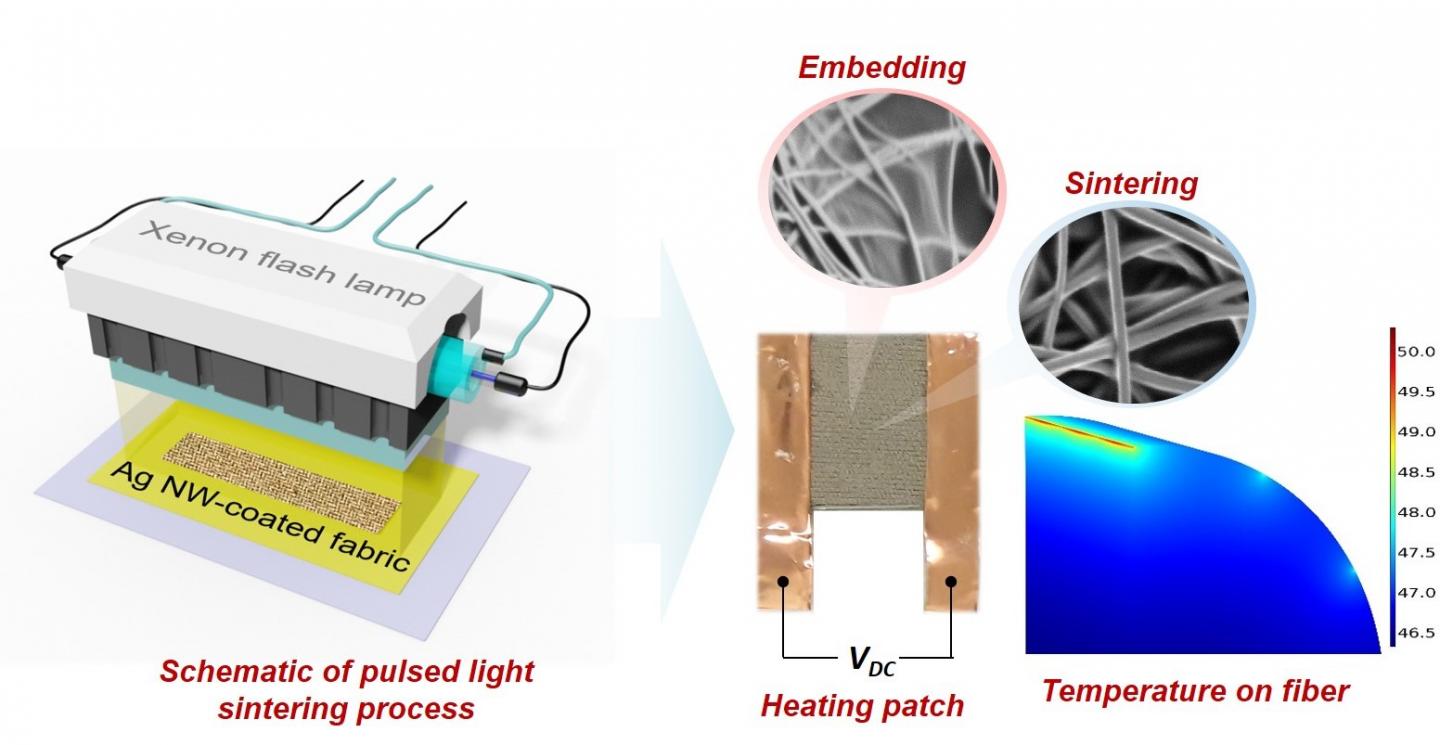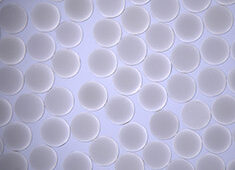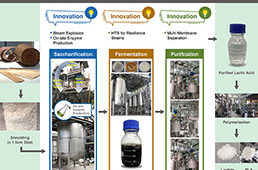
This image shows how to make a personal heating patch from polyester fabric fused with tiny silver wires, using pulses of intense light from a xenon lamp. Credit: Hyun-Jun Hwang and Rajiv Malhotra/Rutgers University-New Brunswick
To eliminate wasting energy on empty spaces, researchers from Rutgers University and Oregon State University have developed thin, durable heating patches that can be sewn into clothing, warming up just the body in the cold winter months.
“This is important in the built environment, where we waste lots of energy by heating buildings – instead of selectively heating the human body,” senior author Rajiv Malhotra, an assistant professor in the Department of Mechanical and Aerospace Engineering at Rutgers University-New Brunswick, said in a statement.
The researchers used intense pulsed-light sintering to fuse silver nanowires to polyester fibers in a process that uses pulses of high-energy light. The entire process takes approximately 300 millionths of a second to complete
The new patches generated more heat per patch area than the current state-of-the-art thermal patches. They achieved a heating performance that is almost 70 percent higher than similar patches developed in other studies. They are also more durable after bending, washing and exposure to humidity and high temperatures and can be produced at a lower cost and powered by small batteries.
The researchers now plan to study whether the new method can be used to create other smart fabrics, such as patch-based sensors and circuits. They also plan to determine how many patches are needed and where they should be placed on people to keep them comfortable while reducing indoor energy consumption.
Approximately 47 percent of global energy is used for indoor heating, with 42 percent of the energy wasted to heat empty spaces and objects. By addressing this wasted heat energy, the researchers believe they can ultimately reduce global warming.
Personal thermal management is an emerging solution that focuses on heating the human body as it is needed.
The study was funded by the National Science Foundation and Walmart U.S. Manufacturing Innovation Fund.
The study was published in Scientific Reports.




